If you want to know how to make coffee with the French Press, you've come to the right place. With our guide, we will help you make coffee that tastes great. In addition to the stamp pot or coffee press, as the French Press is also called, we need the following equipment for our coffee prep:
What you need to prepare with the French Press
- Coffee grinder
- Fine scale
- Kettle with temperature display
- Coffee beans
Everything there? Then let's get started! If you need anything else, you can find most of it in our online shop. Simply follow the links above.
The following recipe is suitable for our Bom Dia, Günter and Marcello Sweet espresso roasts. For lighter filter coffee roasts, we recommend a few small adjustments, which you can find at the end of the article.
If you use this recipe with coffee beans from another roaster, we recommend that you stick to the recipe below because we roast comparatively light.
1. Set the coffee recipe for the French Press
The basis for every coffee recipe is the ratio of coffee to water (brewing ratio). It determines the strength and taste of your coffee. For the French Press we recommend a ratio of 1:16, i.e. around 60 g of coffee per liter of water. All measurements are in grams because we always work with precision scales.
2. Accurately weigh the amount of coffee for the French Press
We place our grinder on the scale, tare it and fill in the coffee beans until the scale shows the desired amount of 60 g. Here we work with 0.1 gram accuracy.
Even small differences can make a significant difference in the taste of a cup of coffee. That's why we always make sure to work precisely.
3. Grinding level for coffee with the French Press

Coffee grinding level for preparation with the French press (stamp pot).
We select the grinding level very coarsely (reference value for the Comandante coffee grinder: 34 clicks). The finer the grind, the more substances the water removes from the coffee. It is important that the grinds are approximately the same size to allow for even, controlled extraction.
4. Mix hot water and coffee
We heat our specified amount of water to 96 °C. If the water is hot, we fill the ground coffee into the empty French Press and pour the hot water over the ground coffee in one go. Then stir three times until the water has mixed with the ground coffee. Now we put the stamp on the pot and start a timer for 4 minutes.
5. Adhere to the steeping time, press the stamp and enjoy
After four minutes of brewing, we slowly press the plunger of our French Press downwards so as not to stir up any coffee particles. Our coffee is now ready, enjoy!
Does your coffee taste as desired? Great, then we've reached our destination. If it is too bitter, we have some tips for the next preparation below.
Coffee too bitter or sour? Here's how to customize the recipe!
For a good, balanced coffee from the stamp pot, we remove around 22% of the coffee particles from the ground coffee beans. If the coffee tastes too bitter, too many particles have ended up in the cup. If, on the other hand, it is too acidic and watery, we have dissolved too few particles.
If the coffee tastes bitter, there can be several reasons for this. Either we ground the coffee too finely, let the coffee brew for too long, or extracted it with water that was too hot. The result is over-extraction. The next time we prepare it, we change one of the parameters and taste the result. We avoid turning several adjustment screws at once.
If the coffee tastes sour or watery, we have either ground it too coarsely, let the coffee brew for too short a time, or extracted it with water that is too cold. The result is under-extraction. The next time we prepare it, we change one of the parameters and taste the result. We avoid turning several adjustment screws at once.
Since coffee consists largely of water, its properties (water hardness and composition) play a major role in the taste. You can find out more about this in our guide to coffee water.
Adjustments for filter coffee roasts
Instead of 60 g of coffee, we use 70 g of coffee per liter of water for the lighter roasts. The water temperature remains the same at 96 °C, we choose the grinding level to be a little finer (Comandante 32 clicks). The reason for this is that the coffee particles from light roasts are more difficult to remove. In order to still achieve a balanced taste, we need more coffee.
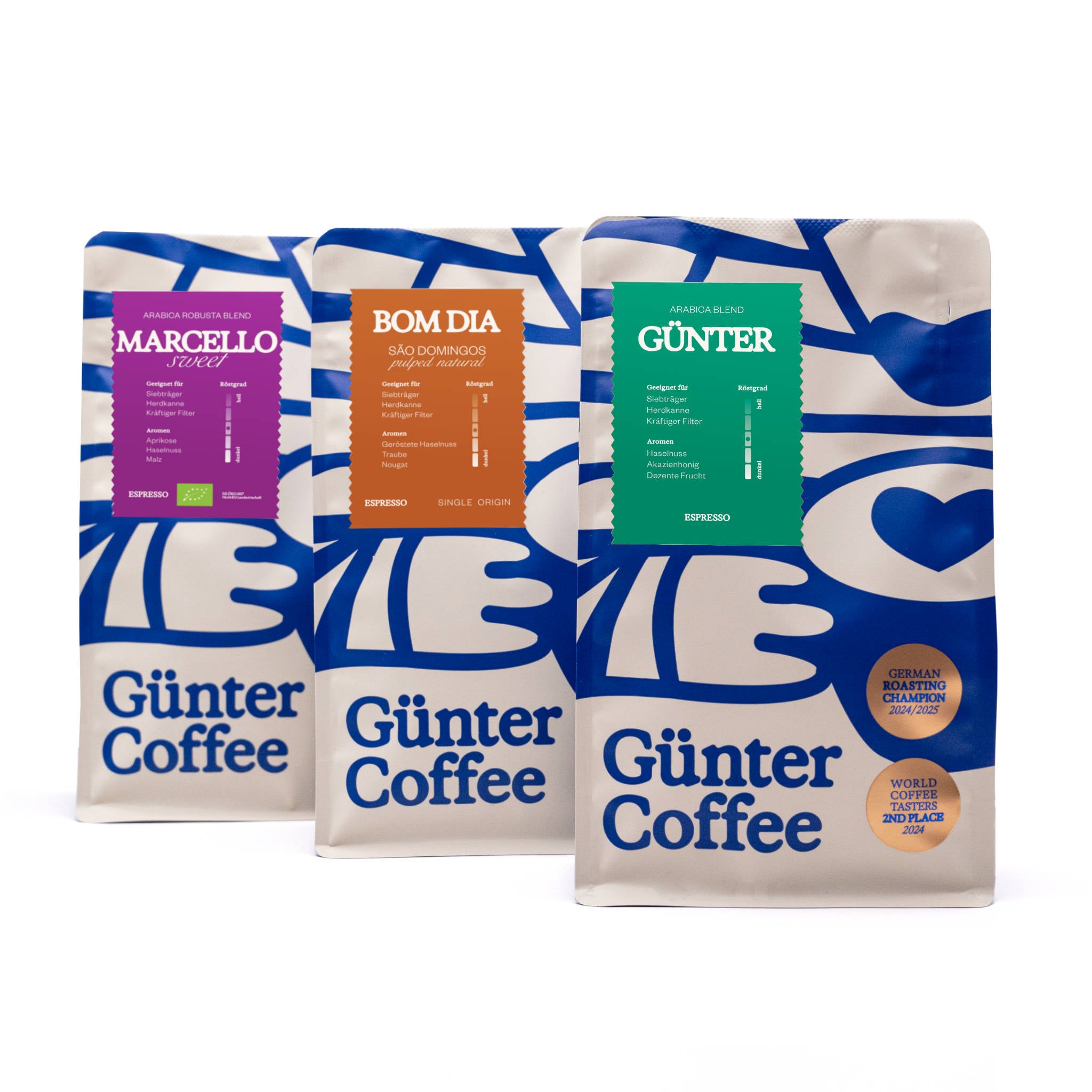

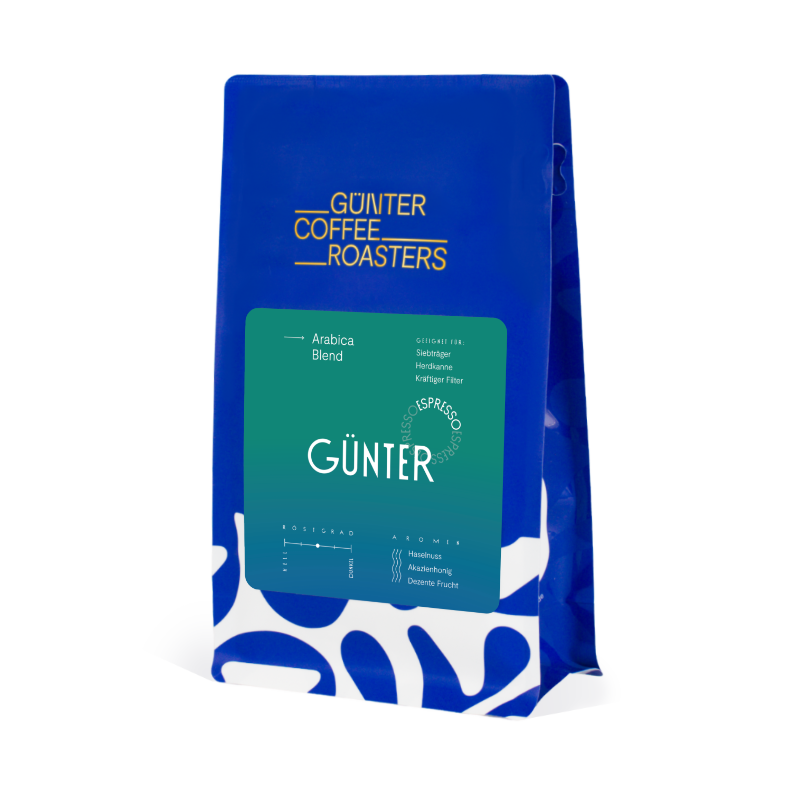

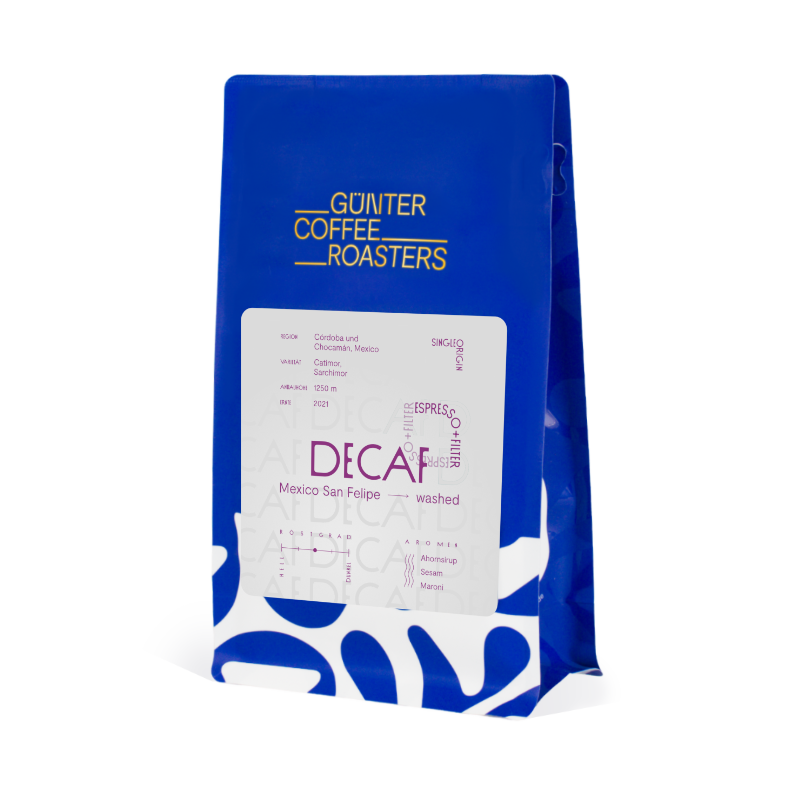
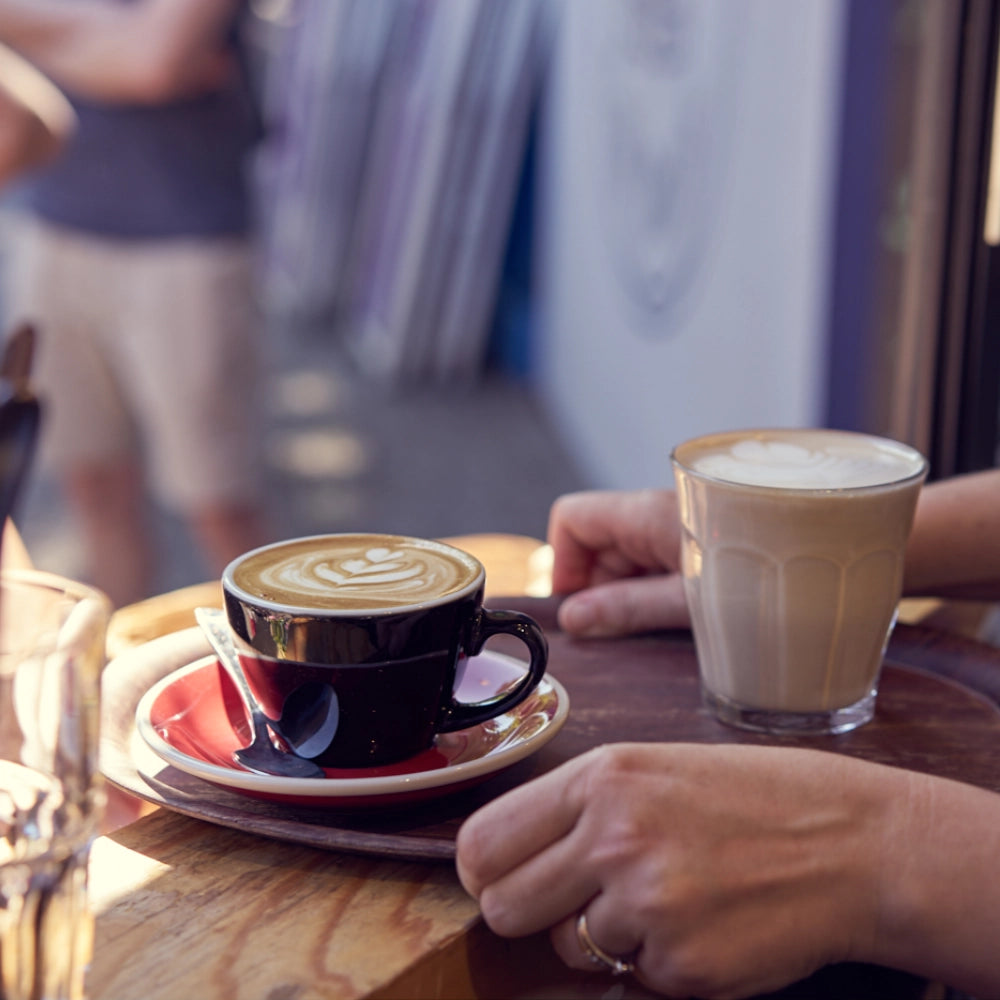
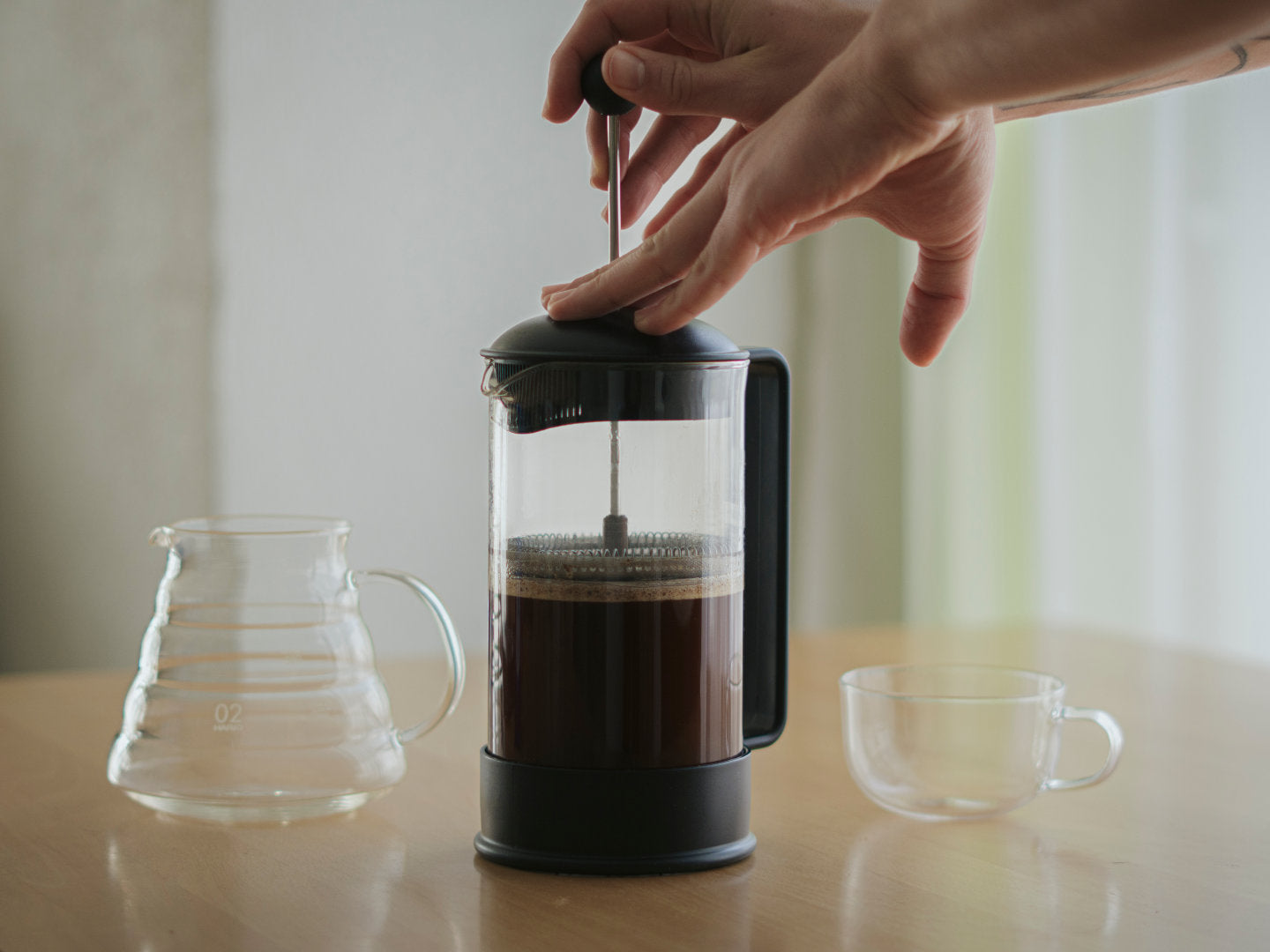

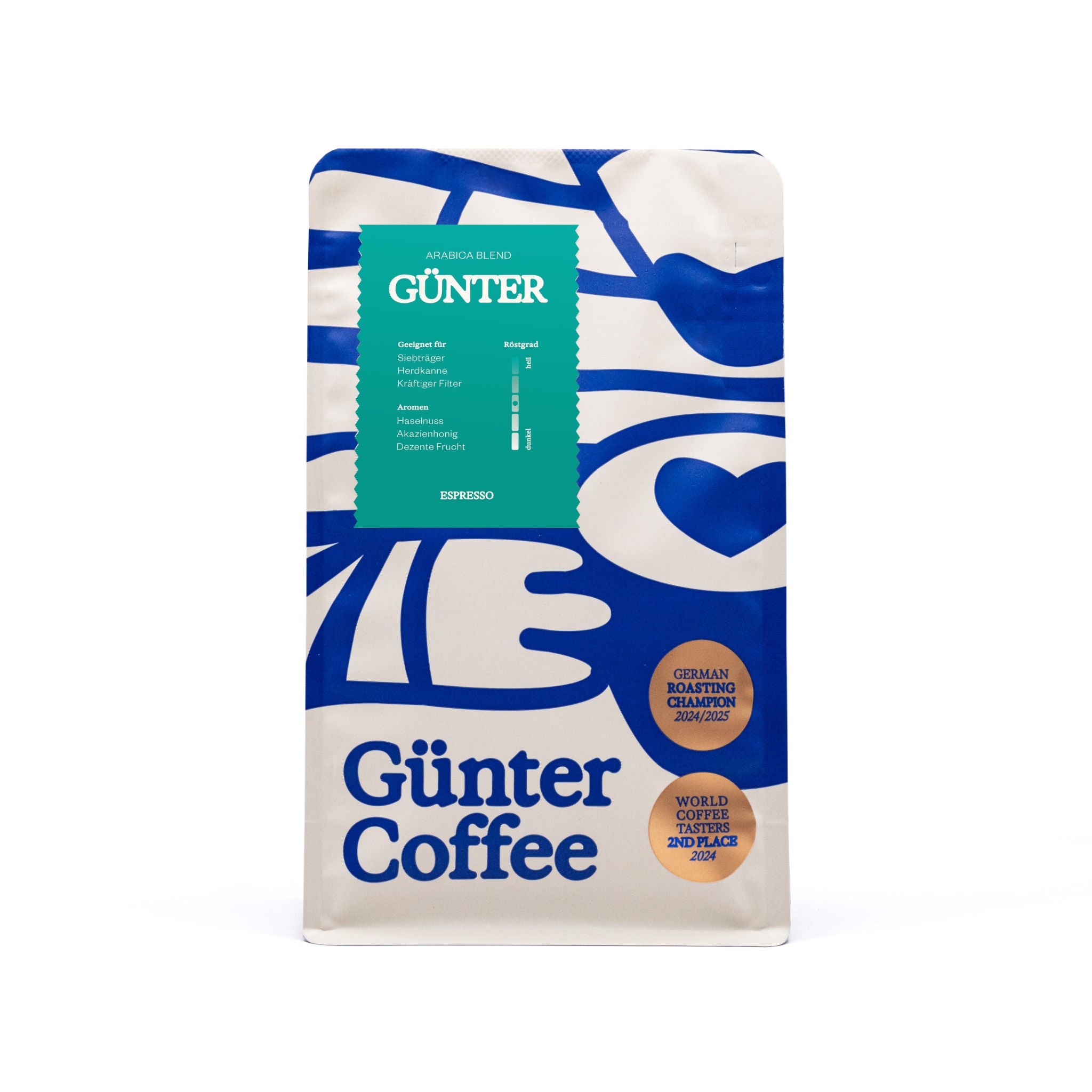
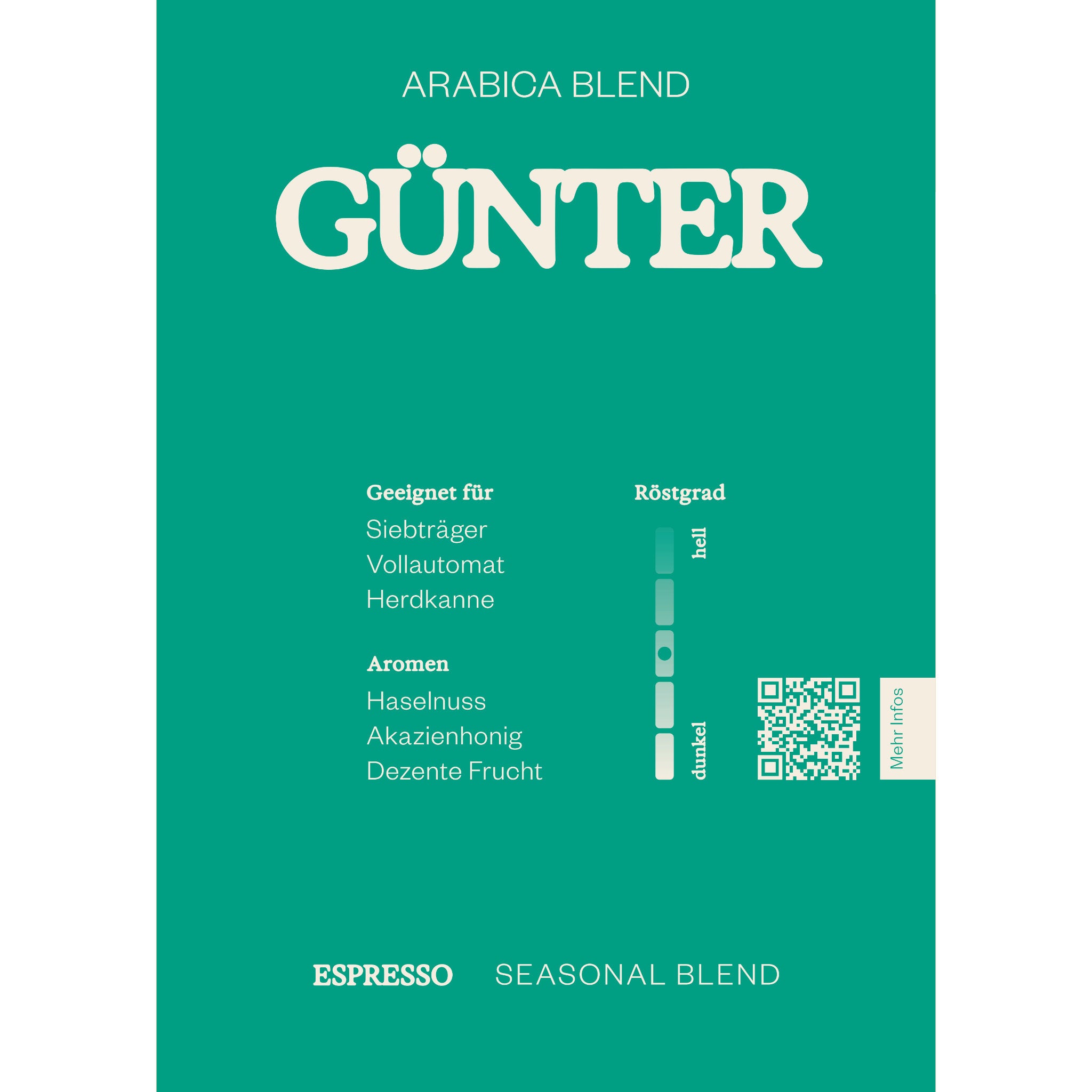

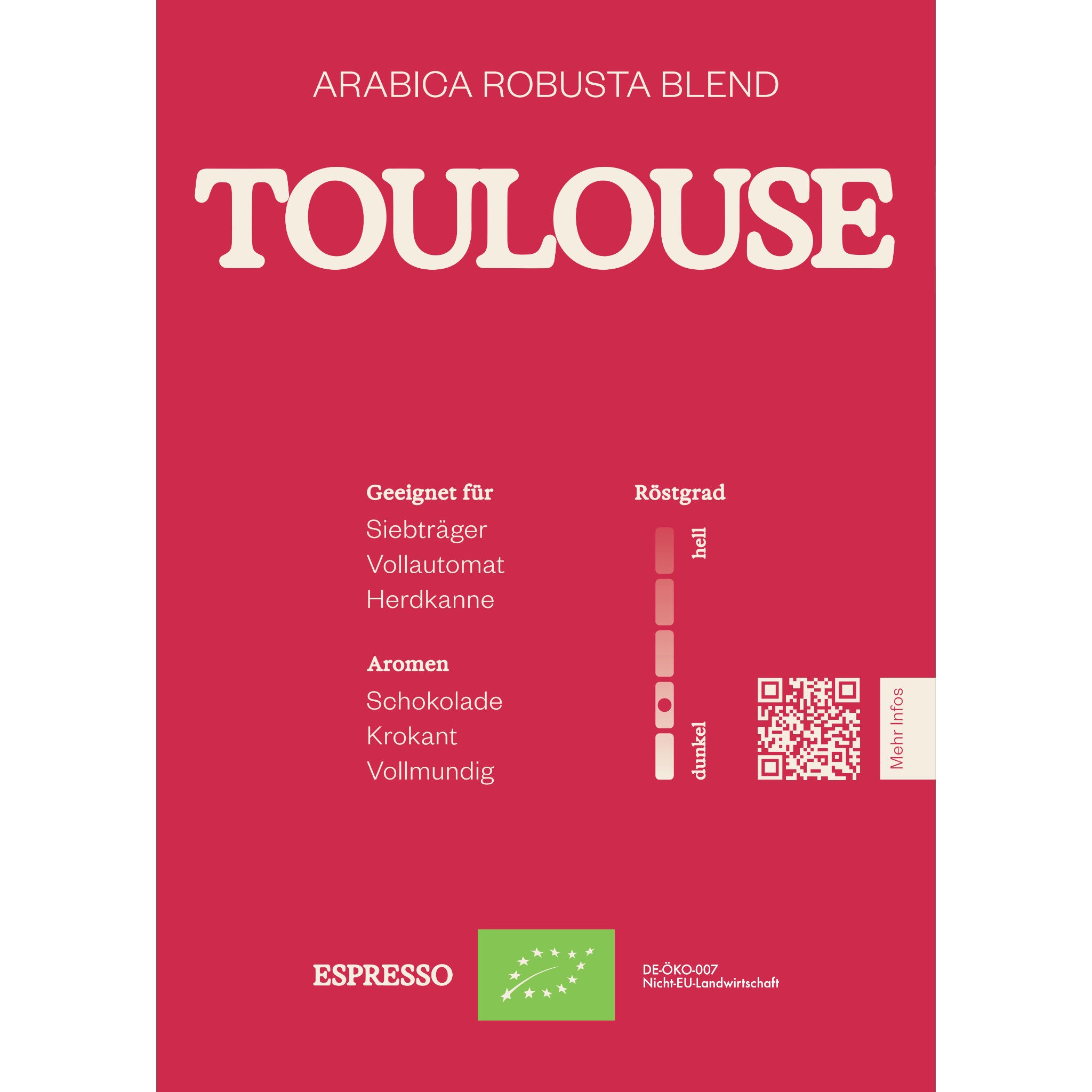

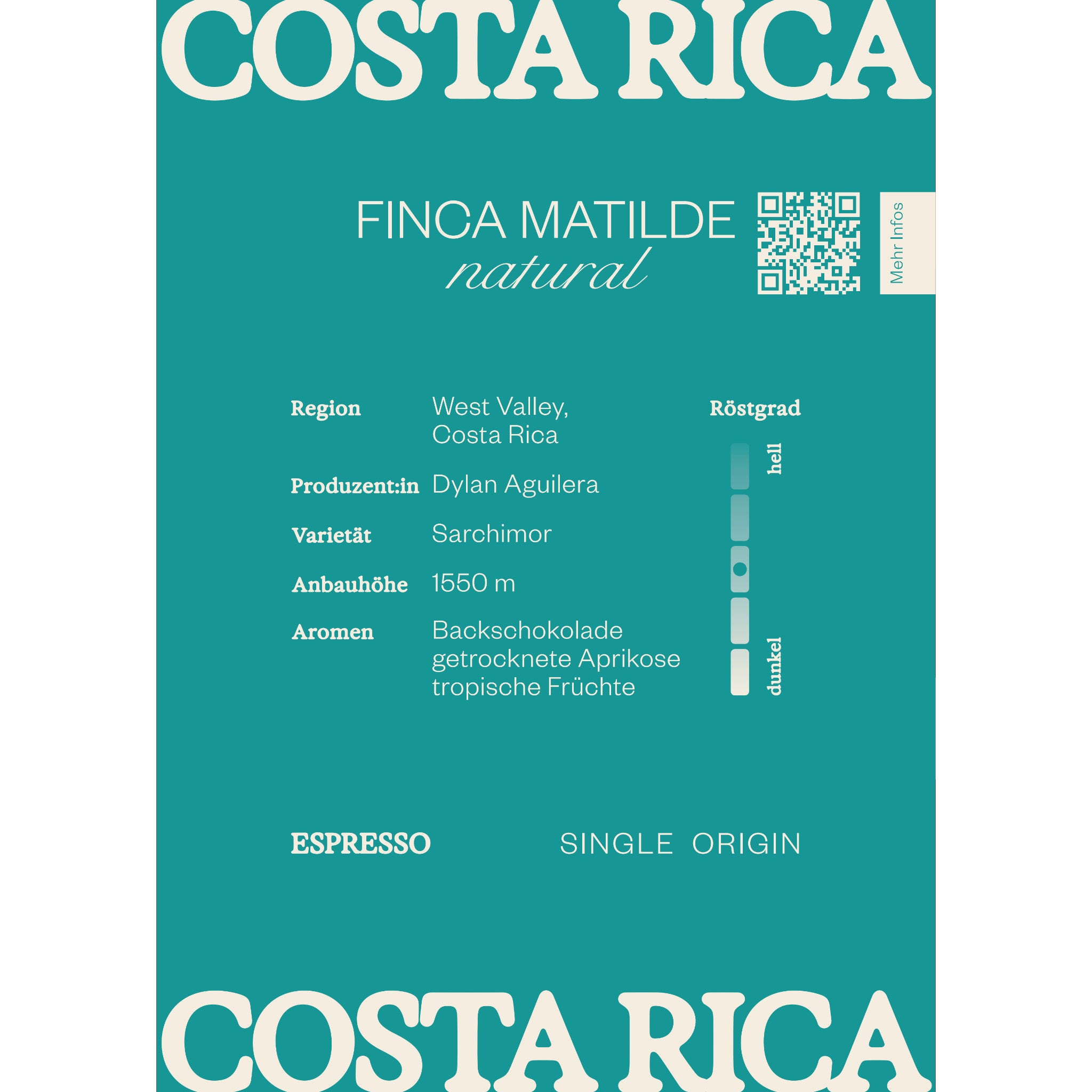
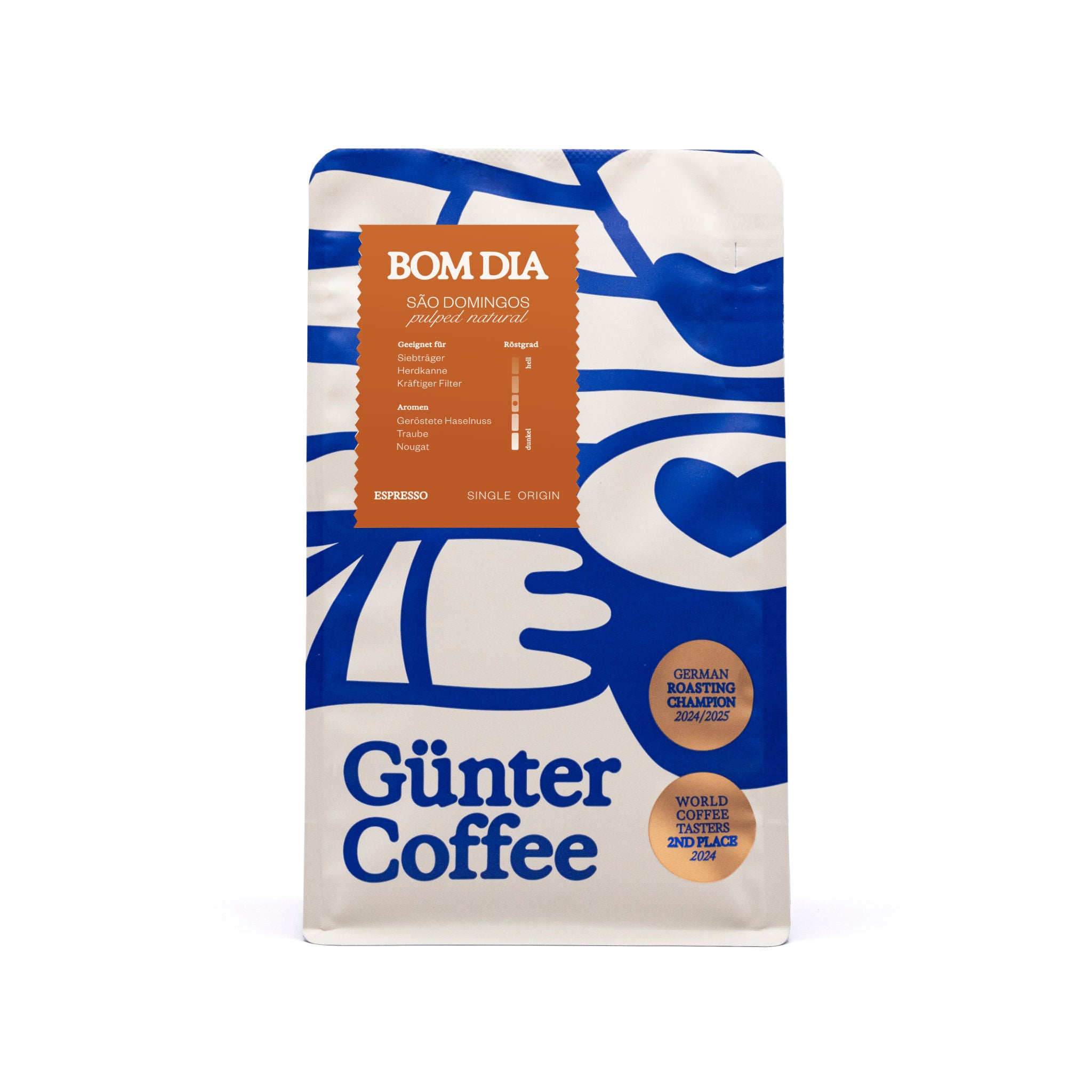


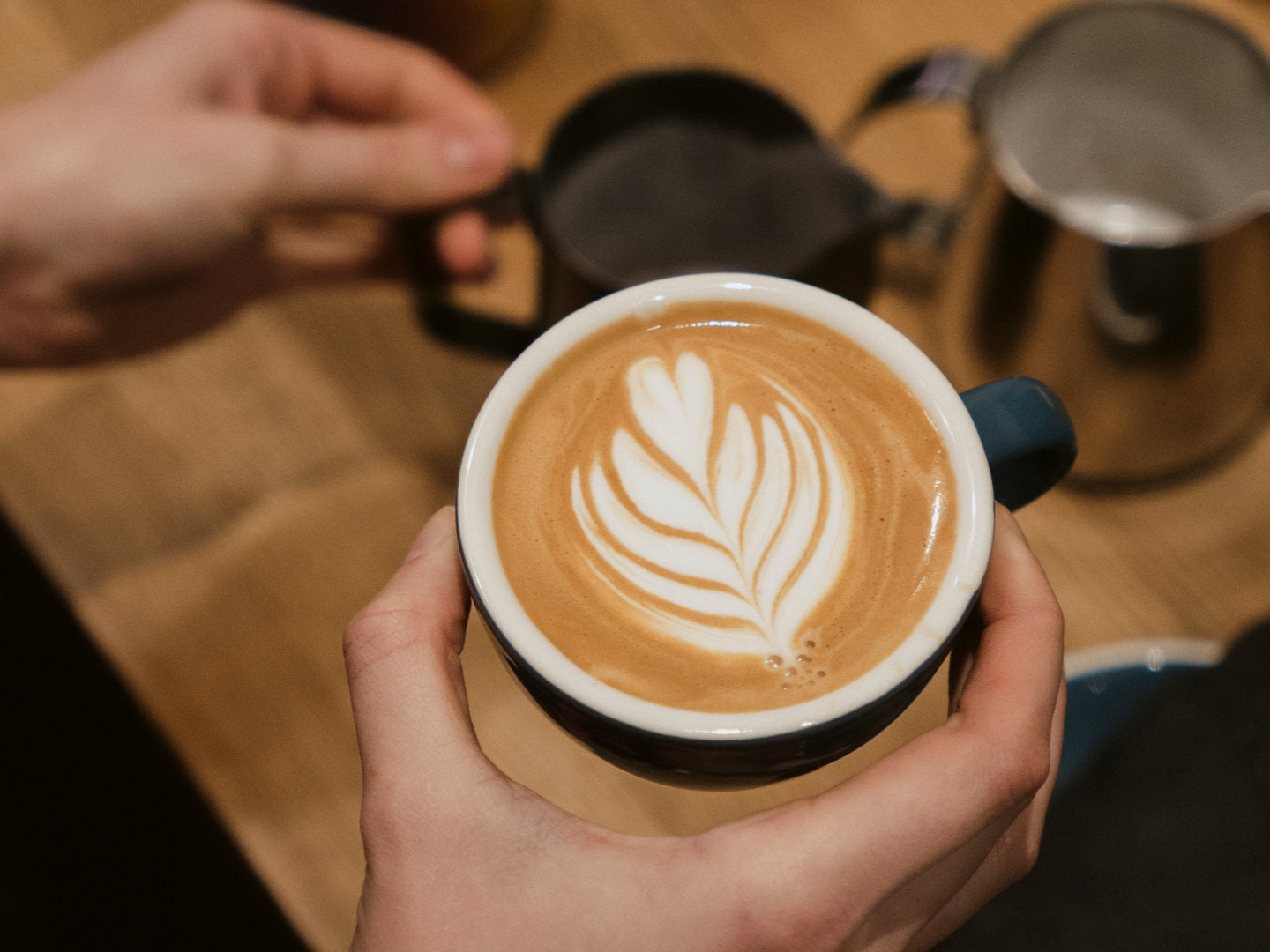





3 comments
Christian
Top beschrieben alles 👍 ich komme vorbei… So etwas nirgendwo entdeckt.chapeau…Gruß Christian (Papa v.luke ) 😁
Top beschrieben alles 👍 ich komme vorbei… So etwas nirgendwo entdeckt.chapeau…Gruß Christian (Papa v.luke ) 😁
Nico | Günter Coffee Roasters
Hallo Nick,
vielen Dank für deinen Kommentar. Espressomühlen mahlen in der Regel sehr fein und eignen sich insbesondere für die Kaffeezubereitung mit einem Siebträger. Wie du schon richtig vermutest, sind sie für die Stempelkanne eher ungeeignet.
Wir empfehlen für die Zubereitung mit der French Press einen eher groben Mahlgrad. Espressomühlen erreichen diesen in der Regel nicht annähernd, selbst auf der gröbsten Einstellung. Dafür gibt es dann entsprechende Filterkaffee-Mühlen in elektrischer oder handgetriebener Ausführung.
Mit besten Grüßen
Nico
Hallo Nick,
vielen Dank für deinen Kommentar. Espressomühlen mahlen in der Regel sehr fein und eignen sich insbesondere für die Kaffeezubereitung mit einem Siebträger. Wie du schon richtig vermutest, sind sie für die Stempelkanne eher ungeeignet.
Wir empfehlen für die Zubereitung mit der French Press einen eher groben Mahlgrad. Espressomühlen erreichen diesen in der Regel nicht annähernd, selbst auf der gröbsten Einstellung. Dafür gibt es dann entsprechende Filterkaffee-Mühlen in elektrischer oder handgetriebener Ausführung.
Mit besten Grüßen
Nico
Nick
Hi,
also der Mahlgrad ist offenbar nicht genormt.
Ich habe ne Miniomoka für espresso. Ist die evtl für Stemplekannekaffee geeignet? Wohl eher nicht.
Grüße, Nick
Hi,
also der Mahlgrad ist offenbar nicht genormt.
Ich habe ne Miniomoka für espresso. Ist die evtl für Stemplekannekaffee geeignet? Wohl eher nicht.
Grüße, Nick